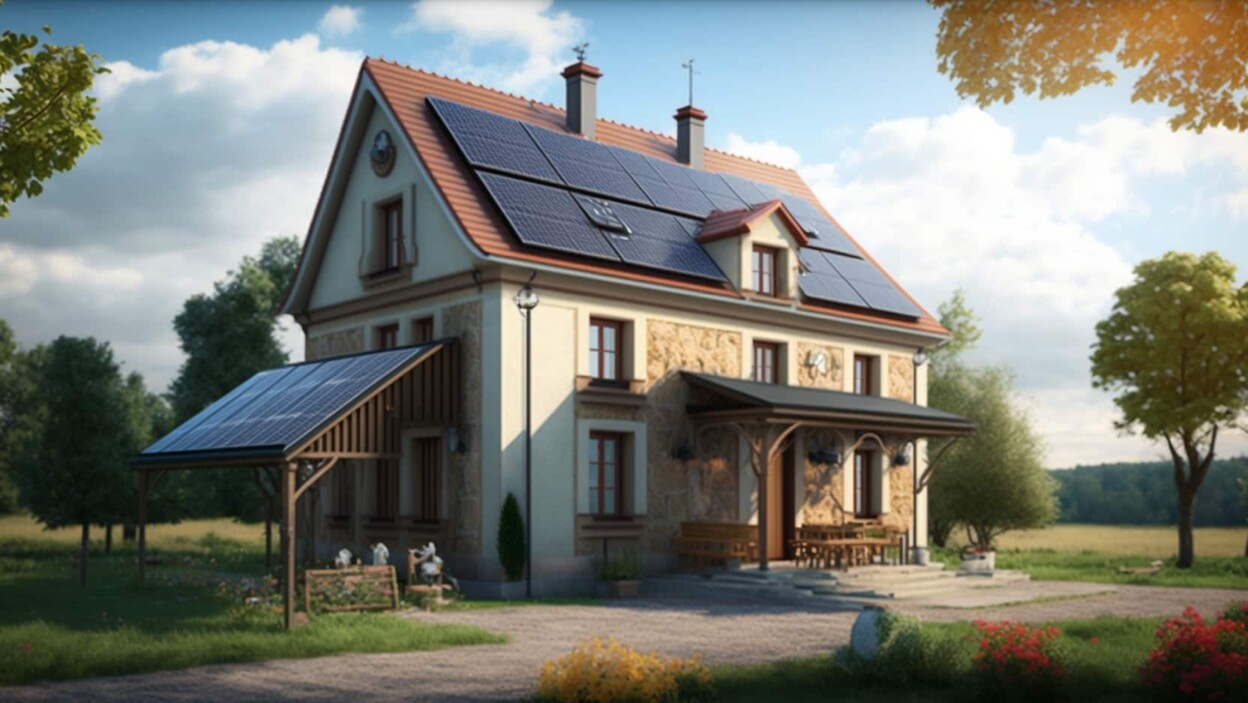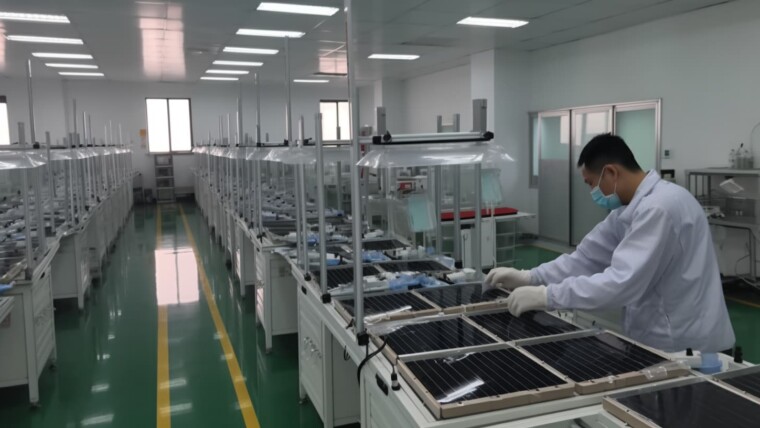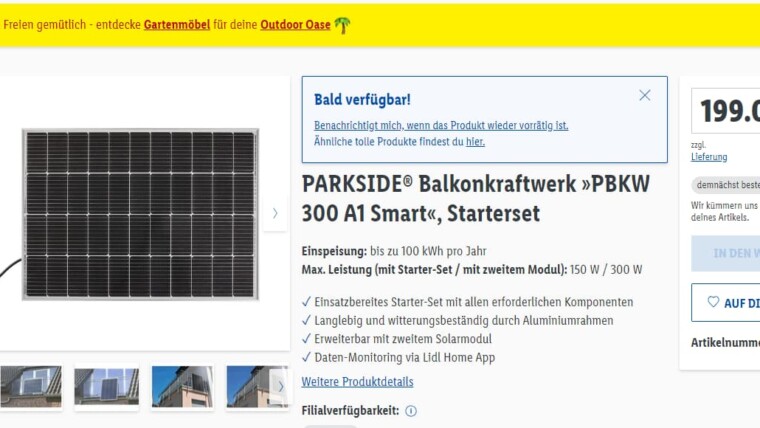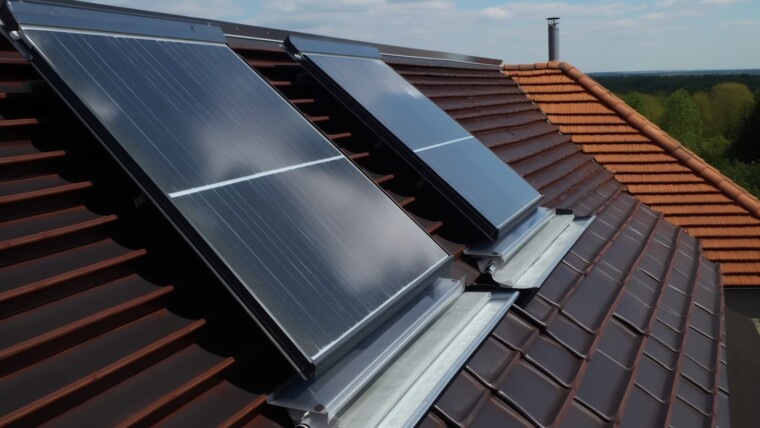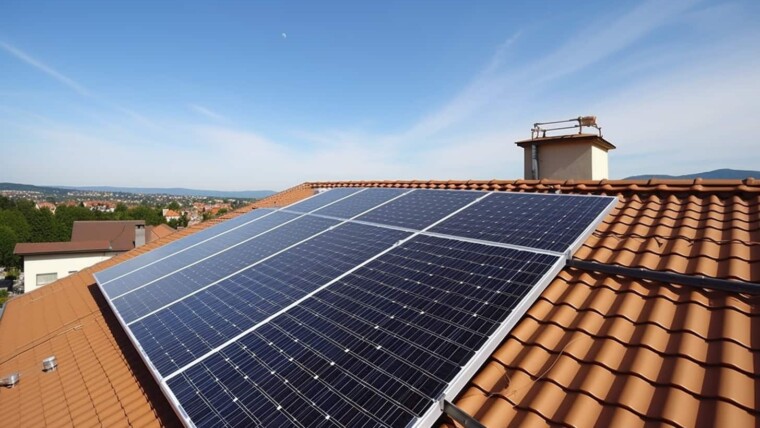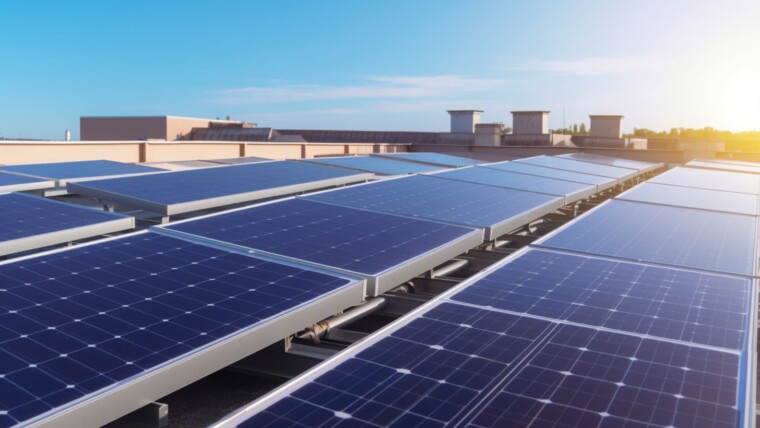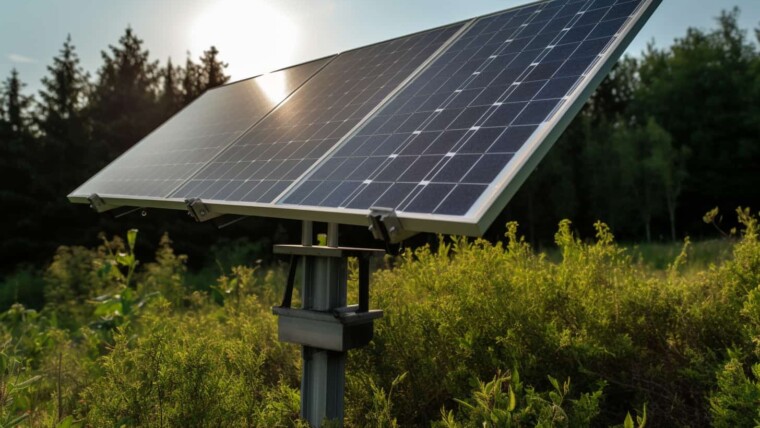Are you looking for an economical and ecological solution to reduce your electricity bills while helping to protect our planet? You're not alone! More and more French households are opting to install photovoltaic panels on their roofs, and with good reason: this solution enables you to make considerable savings over the long term, while doing your bit for the environment.
If you're planning to install a small-scale 3 kWp power plant, you're probably wondering how much roof area you'll need to devote to the project, and how much production you can expect in return.
In this detailed guide, we give you all the information you need to determine the surface area of solar panels required for 3 kWp, as well as the ideal wattage for your project.
How much roof area should I mobilize to install 3 kWp of solar panels?
Is the roof of your home large enough to accommodate the surface area of solar panels needed to produce 3 kWp? That's the question you need to ask yourself before moving ahead with your photovoltaic project.
The roof surface required depends on two major factors:
- The surface area of the solar panels planned for your photovoltaic system;
- Unit peak power in Wp (peak watts).
Watt peak (Wp) is a unit of measurement used to describe the rated power of an individual photovoltaic solar panel or module. Like the kilowatt-peak (1 kWp = 1,000 Wp), the Watt-peak represents the maximum power that the solar panel can produce under ideal (and therefore theoretical) conditions.
Ideal sunlight conditions are generally defined as a solar irradiance of 1,000 watts per square metre (W/m²) and a solar cell temperature of 25°C. Under these conditions, the solar panel produces its maximum power, expressed in Watts peak.
How many square meters does the average solar panel cover?
The type of cells used, the manufacturer, the power output... these variables all determine the dimensions of solar panels. The standard size is generally between 1.6 and 1.8 meters long and 0.9 to 1.0 meters wide, with a thickness of between 30 and 50 mm. In terms of surface area, this equates on average to 1.6 to 1.8 m².
What is the average power of a solar panel?
Here again, several factors come into play, but the power of a standard solar panel ranges from 100 Wp to 400 Wp. To determine the number of solar panels required to reach a target output (3 kWp or 3,000 Wp in our case), simply divide the target output by the unit output.
Let's take an example For example, if you're considering 250 Wp solar panels, you'll need 12 panels to achieve a total output of 3 kWp (250 x 12 = 3,000 Wp). If you opt for 300 Wp panels, you'll need to install 10 photovoltaic panels to achieve a 3 kWp installation.
In short, the higher the individual output of each solar panel, the fewer modules you'll need to achieve the desired output. With the same dimensions, you can reduce the space required on your roof.
Here is a summary table showing the different types of solar panels, their power and the number of panels required to obtain 3 kWp:
| Solar panel technology | Benefits | Panel power (Wp) | Number of panels for 3 kWp |
| Monocrystalline | High energy efficiency, better performance in confined spaces | 300 Wp | 10 |
| Polycrystalline | Good compromise between efficiency and cost, suitable for a variety of conditions | 270 Wp | 12 |
| Amorphous | Lower cost, flexible, works well in low-light conditions | 150 Wp | 20 |
Power of 3 kWp: what surface of photovoltaic panel for my house?
Once you've determined the number of solar panels required for your 3 kWp photovoltaic system, it's time to calculate the total surface area needed to accommodate these panels. To do this, simply multiply the number of solar panels by the surface area of each panel in m² :
Total surface area (m²) = Number of solar panels × Unit surface area per panel (m²)
Let's take, for example, a unit area of 1.8 m² per panel (to be on the safe side). We would then obtain the following results:
- 14.4 m² total surface area for 8 solar panels of 250 Wp each;
- 16.2 m² for a total surface area of 9 solar panels of 200 Wp each.
Thanks to this simple calculation method, you can easily determine the roof surface required to install 3 kWp of solar panels on your home. Attention safety margins for installers (approx. 50 cm at roof ends).
How to convert 1 kWp into m² of solar panels?
To convert kWp power into m² of solar panels, simply divide the desired power by the maximum power per m² of the chosen technology. For example, if you want to install 3 kWp monocrystalline solar panels, and the maximum power of these panels is 200 Wp/m², you'll need :
3,000 Wp / 200 Wp/m² = 15 m² monocrystalline solar panels
Photovoltaic systems: what is the maximum weight your roof can support?
The weight of solar panels can vary according to technology and manufacturer. In general, the weight of a standard photovoltaic panel is around 15 to 20 kg/m² (not including the steel pan for waterproofing). Including the pan, you can expect a weight of 20 to 25 kg/m².
For a 3 kWp installation, it's important to check that your roof structure can support the additional weight of the solar panels. Only a professional will be able to give a satisfactory estimate of your roof's load-bearing capacity, taking into account slope, structure, type of cladding, etc.
If your roof can't accommodate enough solar panels for the desired output (which can be the case with zinc, thatch, shingle or tar-tiled roofs), we'll suggest a ground-mounted installation.
Why choose to mobilize up to 3 kWp of surface area for my solar system?
A 3 kWp system offers a number of advantages:
- Energy production capacity adapted to the needs of a small to medium-sized household ;
- Relatively affordable installation costs;
- The possibility of benefiting from various government and local authority financial incentives and grants for installations of this size.
What can be powered with a 3,000 Wp solar panel surface?
With a 3 kWp solar system, it's possible to supply a large proportion of the energy needs of a "standard" household, including lighting, appliances, heating and air conditioning. The exact capacity will depend on the actual output of the solar panels, which varies according to the amount of sunshine, the orientation and inclination of the panels, and the efficiency of the system.
If you drive an electric car, have a heat pump or a heated swimming pool, you'll need to opt for a power rating greater than 3 kWp. Don't neglect the sizing stage: it determines the profitability of your project!
What is the production capacity in kWh of 3 kWp of solar panels?
The production capacity in kWh of a 3 kWp solar array depends on local conditions, such as insolation and losses due to orientation, inclination and temperature. To estimate annual production, use the following formula:
Annual_production (kWh) = Annual_sunshine (h) × (1 - Degressive_rate) × Maximum_power (kWp)
The degressive rate or degradation rate is a percentage that represents the decrease in efficiency and energy production of a solar panel, according to the bias of shading and temperature variations (this is generally estimated at 10 %). Assuming 1,500 hours of sunshine a year and a degradation rate of 10 %, the annual output of a 3 kWp solar array would be :
Annual output = 1,500 h × (1 - 0.1) × 3 kWp = 4,050 kWh
How much does it cost to install 3 kWp solar panels?
The price of a 3 kWp solar system varies according to panel technology, manufacturer, component quality and installation cost. On average, you should expect to pay between €6,000 and €10,000, before taking into account available grants and financial incentives.
What state aid is available for 3 kWp of solar panel surface area?
By opting for a 3 kWp plant, you can benefit from state aid to reduce your initial investment. Let's take a closer look.
#1 Bonus for self-consumption up to 3 kWp
The "prime à l'autoconsommation" (self-consumption bonus) is a financial incentive for individuals wishing to install solar panels to produce their own electricity. The bonus is increased for installations with a capacity of 3 kWp or less.
The amount of the self-consumption bonus varies every quarter, depending on the number of connections made. Since the beginning of 2022, the amount has also changed, taking into account a "Kn" indexation coefficient. Between February 1 and April 30, 2023, the amount of the self-consumption bonus for a photovoltaic installation with a power output of 3 kWp or less is €500/kWp, i.e. a maximum of €1,500.
#2 Sale of surplus: a higher feed-in tariff below 9 kWp
When you install solar panels to generate electricity, it's possible that your system generates more energy than you consume. In this case, the excess energy produced can be sold back to the electricity grid, by signing an OA Solaire contract, or feed-in tariff contract, with your approved operator (EDF OA or a local distribution company - EDL). This 20-year contract allows you to amortize the cost of your solar panels over the long term.
Photovoltaic installations under 9 kWp benefit from a feed-in tariff of €0.1 / kWh. This rate rises to €0.06 / kWh for installations over 9 kWp. Please note: the resale price varies fairly regularly.
By opting for a photovoltaic system with an output of 3 kWp or less, you can save up to 70 % on your electricity bill.
#3 The reduced VAT for surfaces of less than 3 kWp
Solar installations with a peak power of 3 kWp or less benefit from a reduced VAT rate of 10 %, instead of the standard rate of 20 % that applies to installations above this peak power.
This reduction applies to the purchase of equipment and installation work, reducing the total cost of the project.
#4 Local Government Assistance
Some local authorities offer financial assistance to encourage the installation of solar panels. This can take the form of grants, interest-free loans or tax breaks. Contact your local authority to find out about the schemes available.
#5 Photovoltaic taxation: tax exemption up to 3 kWp
Income from solar-generated electricity is exempt from income tax when the power output of the installation is less than or equal to 3 kWp. This exemption applies to both self-consumption and the sale of surplus electricity.
Which panel surface for a 3kWp installation: what you should know
To sum up, a 3 kWp solar system requires a variable roof surface area, depending on the solar panel technology and energy efficiency. On average, you need between 15 and 20 m² of roof surface to install 3 kWp of solar panels. This size of installation offers a number of advantages, including a production capacity suited to the needs of an average household, affordable costs and the possibility of benefiting from various forms of financial assistance.
To estimate the kWh output of a 3 kWp installation, it's necessary to take into account sunshine and losses due to orientation, inclination and temperature. Finally, it's important to check that the roof structure can support the weight of the solar panels, and to consult a professional for a precise assessment of the needs and costs associated with the installation.
Frequently asked questions (FAQ)
What is the output of a 3 kWp photovoltaic system?
Generally speaking, a 3 kWp photovoltaic system produces around 4,000 kWh of electricity per year.
How many solar panels for 9 kWp?
The number of solar panels needed to reach 9 kWp depends on their individual power ratings. For example, you'll need 24 solar panels of 375 kWp each to achieve a total output of 9 kWp.
What is the lifespan of a 3 kWp photovoltaic system?
The lifespan of a photovoltaic system depends on the quality of the solar panels and their maintenance. In general, the average lifespan of a photovoltaic system is 25 to 30 years. However, the performance of solar panels will inevitably diminish over time, and it's possible that their efficiency will drop to 80 % of their initial capacity after 20 to 25 years.

Reda T.
Reda holds a PhD in finance and specializes in renewable energy economics. He combines financial expertise with an interest in sustainability, writing not only on the financing of green projects, but also on more general topics and frequently asked questions in this field.
